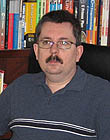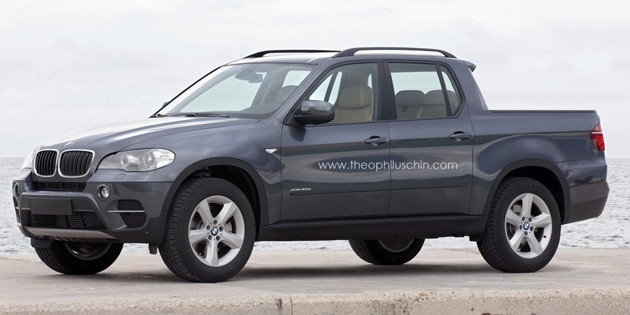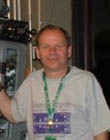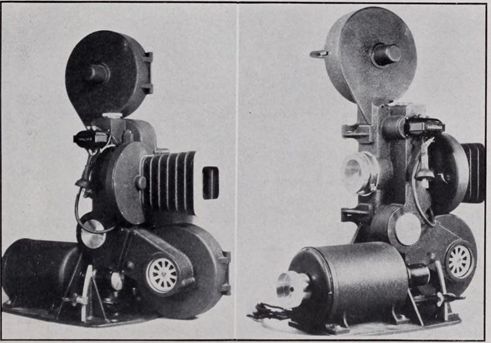|
|
This topic comprises 2 pages: 1 2
|
|
Author
|
Topic: Why didn't Mitchell continue building Projectors?
|
Steve Matz
Jedi Master Film Handler
Posts: 672
From: Billings, Montana, USA
Registered: Sep 2003
|
 posted 06-01-2014 11:13 PM
posted 06-01-2014 11:13 PM




I was doing some research on the Mitchell Camera Corporation which was a staple name in Motion Pictures going back to the early part of the 20th Century and has probably filmed more MP and Television Films in it's history than anything even close to second place.
I was surprised to see that they did build some Carbon Arc Projectors at one time;more specialized to work with their camera's for "Gone with the Wind" and also background projectors for VistaVision Effects...
So I kind of wondered why they didn't continue building 35mm Projectors since their Name was probably the best known in the Industry and their Reputation for building Professional Quality Built Camera'a was intact. I would have thought their name would have been a selling point if they would have decided to Mfger Production Theater Projectors. Maybe because they were making enough different Cameras for the Industry they didn't need to concentrate on producing a Theater Projector. It would have been interesting if they did to see what it's sales would have been like competing with the likes of Simplex,Motiograph,etc.
Mitchell made a pin-registered background plate projector with a carbon arc lamphouse which was synchronized with the film camera. One of the first MPRPPs (Mitchell Pin Registered Process Projector) was used in Gone with the Wind. Two and three-headed background projectors evolved for VistaVision effects.
Camera Models made by MITCHELL
Mitchell Standard - The original Mitchell camera, introduced in 1920
Mitchell GC - High-speed camera system able to run at variable speeds up to 128 frames per second
Mitchell NC/BNC ("Newsreel Camera"/"Blimped Newsreel Camera") - Improved model designed for production sound-shooting, introduced in 1932. This camera became the de facto standard for Hollywood Production for the greater part of the century. Mitchell NC and BNC camera heads became "donors" for Cinema Products Corporation XR35 cameras, which incorporated many of CP's improvements to the basic Mitchell production sound camera, and which were formerly available as separate features from CP.
Mitchell SS - Single-system camera - Used mainly by the U.S. Army Signal Corps units during WW-II; was a highly modified NC
Mitchell VistaVision - Production camera for sound shooting using Paramount's VistaVision process (The Ten Commandments (1956 film), 1956 and later; earlier VistaVision productions used converted Stein and/or converted Technicolor Three-Strip cameras). VistaVision was used by George Lucas in Star Wars for its larger negative while avoiding costly 65mm special-effects shots.
Mitchell FC/BFC ("Fox Camera"/"Blimped Fox Camera") - 65mm version of NC and BNC, introduced with Fox's improved Todd-AO system (South Pacific, 1957, and later)
Mitchell R35 - a pin-registered, hand-holdable and tripod-mountable reflex 35mm camera with multiple magazine mounting positions and an available sound blimp. Proprietary R35 lens mount. Succeeded by the R35R (industry-standard BNCR mount) and the R35RC (BNCR mount and crystal-controlled motor).
Mitchell NCR/BNCR - Reflex version of NC/BNC
Mitchell 16 - a pin-registered 16mm camera with the versatility of the Standard, and the high speed of the GC
Mitchell R16 - a pin-registered reflex 16mm camera which was relatively silent and was available in double-system (Model R16DS) and single-system (Model R16SS) models for newsgathering and newsfilm production. This relatively expensive model found use mainly with CBS's 60 Minutes. The single-system model incorporated a Davis (tight) Loop drive system, unique in all single-system cameras. The double-system model simply eliminated the Davis (tight) Loop drive system, and the lower sprocket, thereby reducing the complexity of the internal gearing and lowering the camera's acoustic noise signature.
| IP: Logged
|
|
Leo Enticknap
Film God

Posts: 7474
From: Loma Linda, CA
Registered: Jul 2000
|
 posted 06-03-2014 04:21 PM
posted 06-03-2014 04:21 PM





BMW is a household name in the motor industry, but they don't build trucks. Novo Nordisk is a household name in pharmaceuticals, but they don't make anti-cancer drugs. Etc. etc.
My guess would be that by the time Mitchell became established as a leading camera maker, the market in theatre projectors was a crowded and saturated one, and they didn't have any killer technology that would have enabled them to grab market share away from the established players. Look what happened to Kodak and inkjet printing.
quote: Steve Matz
and has probably filmed more MP and Television Films in it's history than anything even close to second place.
I would have thought that the Bell and Howell 2709 would be at least in a not-too-distant second place. OK, it proved too noisy to be easily usable for sync sound shooting, but for MOS photography and as an animation rostrum camera, this model remained in mainstream use well into the '80s. I seem to remember reading somewhere that the same physical camera that shot the cels for Snow White (through filters, to achieve the YCM successive frame seps) also did so for The Lion King (on chromogenic color negative stock). I believe that the SMPTE test films (e.g. RP-40) were also shot on a 2709, too.
| IP: Logged
|
|
|
|
|
|
|
|
|
|
|
|
|
|
|
|
|
|
|
|
|
|
|
|
|
|
|
|
|
|
All times are Central (GMT -6:00)
|
This topic comprises 2 pages: 1 2
|
Powered by Infopop Corporation
UBB.classicTM
6.3.1.2
The Film-Tech Forums are designed for various members related to the cinema industry to express their opinions, viewpoints and testimonials on various products, services and events based upon speculation, personal knowledge and factual information through use, therefore all views represented here allow no liability upon the publishers of this web site and the owners of said views assume no liability for any ill will resulting from these postings. The posts made here are for educational as well as entertainment purposes and as such anyone viewing this portion of the website must accept these views as statements of the author of that opinion
and agrees to release the authors from any and all liability.
|

 Home
Home
 Products
Products
 Store
Store
 Forum
Forum
 Warehouse
Warehouse
 Contact Us
Contact Us




 Printer-friendly view of this topic
Printer-friendly view of this topic









![[Big Grin]](biggrin.gif)
![[Smile]](smile.gif)



![[Eek!]](eek.gif)






